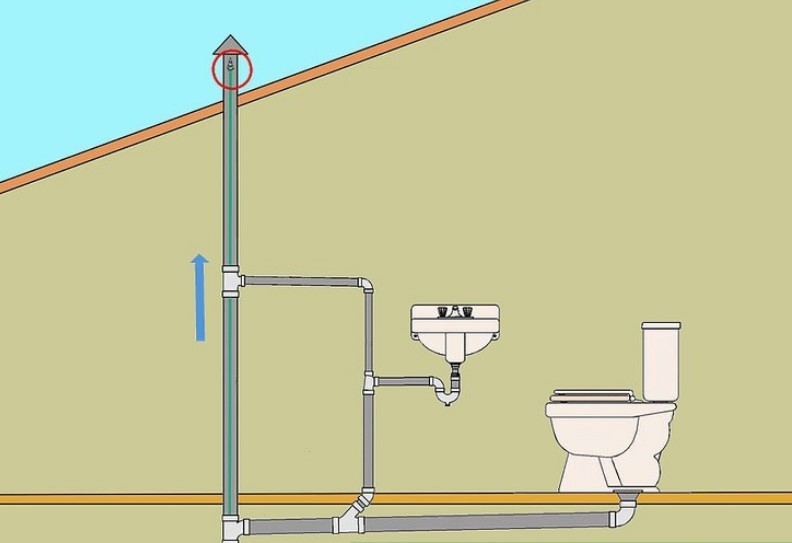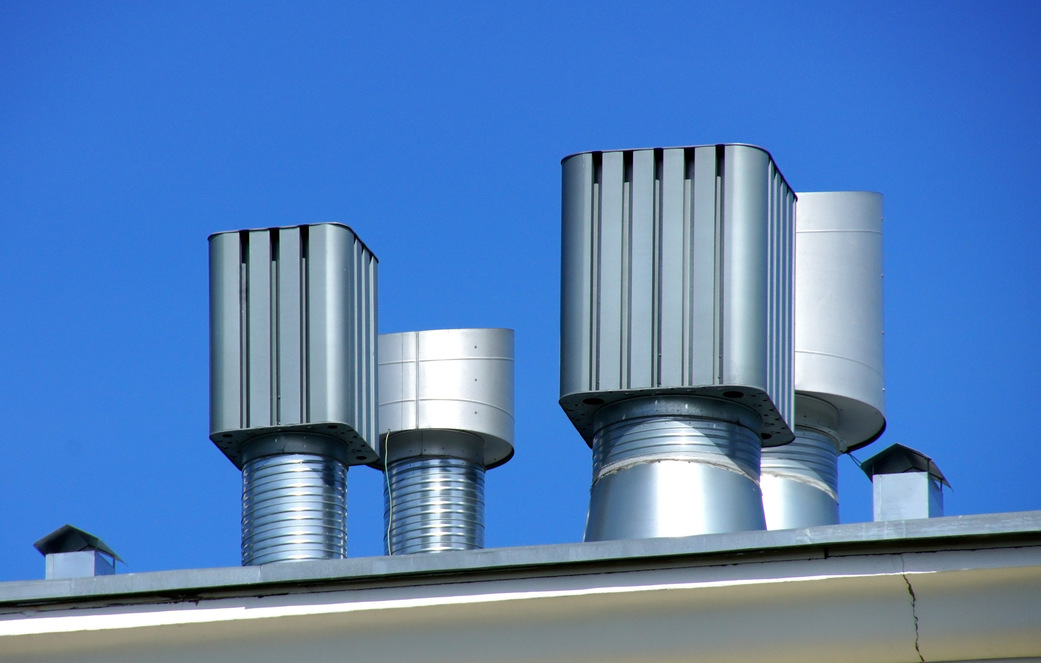How Adequate Ventilation Protects Your Plumbing System
How Adequate Ventilation Protects Your Plumbing System
Blog Article
The author is making a few great observations related to The Upsides of Proper Ventilation in Plumbing Design overall in the content followed below.

Proper air flow in plumbing systems is often ignored, yet it is essential for preserving the functionality and security of your home's pipes. Ventilation assists control air pressure, stop the accumulation of unsafe gases, and ensure the effective removal of waste. In this guide, we will certainly explore the importance of appropriate plumbing ventilation, how it works, and the advantages it brings to your plumbing system.
Exactly How Air Flow Works in Plumbing Solutions
Air Pressure Law
Appropriate ventilation maintains balanced air pressure within the pipes system. When water flows via pipelines, it displaces air. Without ample ventilation, this displacement can develop unfavorable pressure, resulting in slow down drains or siphoning of water from traps, which can cause unpleasant odors to permeate into the home.
Protecting Against Drain Gas Build-up
Among one of the most crucial features of plumbing vents is to prevent drain gases, such as methane and hydrogen sulfide, from collecting within the home. These gases can position major health and wellness threats and are very flammable. Vent pipes enable these gases to leave securely outdoors.
Helping in Waste Removal
Ventilation helps in the effective elimination of wastewater by preventing airlocks in the water drainage system. When air can flow easily with the vents, it permits water and waste to flow smoothly with the pipelines, lowering the danger of clogs and back-ups.
Advantages of Correct Ventilation
Boosted System Effectiveness
Appropriately aerated plumbing systems operate extra successfully, with less blockages, faster draining pipes, and much less pressure on the pipelines. This effectiveness extends the life-span of the plumbing system.
Improved Air Top Quality
By stopping sewage system gases from entering your home, proper ventilation adds to far better interior air top quality, making your living environment healthier and more comfortable.
Stopping Water Damages
Adequate air flow helps avoid water from being siphoned out of catches, which can bring about sewage system gases going into the home and causing water damages gradually.
Actions to Make Certain Appropriate Air Flow
Consulting Plumbing Codes
Always consult regional pipes codes when designing or customizing your plumbing system. These codes provide the essential standards for appropriate venting and ensure your system meets safety and security standards.
Normal Assessment and Maintenance
Normal inspections can help recognize possible air flow concerns before they come to be major problems. Maintenance jobs, such as cleaning vent pipelines and looking for clogs, are vital for maintaining the system in good working order.
Expert Installment
For new installments or major adjustments, it's smart to work with an expert plumbing. They have the experience to ensure the air flow system is correctly made and mounted according to code.
Understanding Ventilation in Plumbing
Ventilation in pipes refers to the network of pipelines that allow air to stream via the drainage system. These vents serve multiple functions, consisting of managing atmospheric pressure within the pipelines, avoiding drain gases from going into the home, and helping in the smooth circulation of wastewater.
Sorts Of Pipes Vents
Key Heap Vent
The main stack air vent, also referred to as the air vent stack, is the primary vent in a plumbing system. It expands from the major drainpipe align through the roofing, enabling gases to get away and fresh air to go into the system.
Branch Vent
Branch vents link to the major stack vent and serve private components, such as sinks, commodes, and showers. These vents guarantee that each fixture has ample ventilation to operate effectively.
Air Admittance Shutoff (AAV).
An Air Admission Shutoff (AAV) is a one-way shutoff that permits air to enter the pipes system without the demand for a standard air vent pipeline extending with the roof. AAVs are generally utilized in remodellings or locations where mounting a conventional vent is unwise.
Indicators of Poor Ventilation in Pipes.
Slow Draining Fixtures.
If your sinks, bathtubs, or toilets are draining gradually, it could be a sign of bad ventilation. Insufficient air circulation can create a vacuum cleaner effect, making it difficult for water to drain appropriately.
Gurgling Appears.
Gurgling audios coming from drains pipes are typically an outcome of air being sucked with water traps as a result of negative pressure in the pipelines. This is a clear indication of insufficient ventilation.
Unpleasant Odors.
Drain odors inside your home are a red flag that your pipes system is not appropriately ventilated. This might imply that drain gases are not being appropriately aired vent outside, causing possibly dangerous problems.
Typical Air Flow Blunders.
Insufficient Vent Sizing.
Utilizing undersized vent pipes can result in bad air circulation and stress discrepancies in the system. It's necessary to utilize vents that satisfy the certain demands of your pipes system.
Improper Vent Placement.
Positioning vents as well far from the fixtures they offer can reduce their performance. Appropriate placement makes certain that air can stream openly and effectively through the system.
Disregarding Code Requirements.
Building ordinance offer particular standards for pipes ventilation. Neglecting these codes can result in a system that stops working to operate properly and might bring about costly repair services or carcinogen.
Final thought.
Proper ventilation is a critical component of any kind of pipes system, guaranteeing that it works successfully and securely. By recognizing the relevance of air flow, recognizing the indications of bad ventilation, and taking steps to maintain your system, you can prevent pricey concerns and safeguard your home's air quality.
4 Things You Should Know About Your Plumbing Vents
What Plumbing Vents Are
Also called a vent stack, a plumbing vent is a vertical pipe attached to your drain line that runs through your roof. The plumbing vent pipe, or plumbing air vent, removes gas and odors from your plumbing system and allows fresh air to enter the pipes, helping the water to flow out of the drain pipes.
What Plumbing Vents Do
Plumbing vents have two basic functions. One of which is to allow unpleasant smelling wastewater and sewer gasses to escape your plumbing system instead of entering your home. Plumbing vent pipes are typically located on roofs, away from windows, to ensure the fumes exit the home completely.
The other function of the plumbing vent is to move fresh air into your plumbing system. This helps move water through every plumbing fixture in your house, like toilets and sink drains. Think of the way in which you need to let a little air into the bottle as you pour soda in order to make the drink flow smoothly.
Different Types of Plumbing Vents
True vent: This is the most common vent option. In simplest terms, a true vent is a vertical pipe attached to your drain line that exits through the roof. They often function as the main vent that other fixtures can connect to. Re-vent pipe or auxiliary vent: Attached to the drain line near specific plumbing fixtures, re-vent pipes run up and over to connect to the main vent. Common vent: Two plumbing fixtures installed on opposite sides of a wall are typically tied into the vent stack using something known as a sanitary cross. Wet vent: This venting option operates as a drain pipe and a vent at the same time. Wet vent drainage systems drain water from one fixture while venting the air from another. Although they’ve been used for over 100 years, wet vent systems have only recently been added to the plumbing code in many areas. If you’re planning on installing one in a bathroom remodel, make sure you check your local code prior to construction. Loop vent: For free-standing fixtures like kitchen island sinks, loop vents are ideal. These vent pipes run under the floor, rise from the P-trap, and create a loop inside the cabinet sink. Air admittance valve: An AAV is a one-way mechanical valve typically installed at the site of the plumbing fixture. AAVs allow venting to occur without having to tie into a larger venting system. They’re ideal for venting fixtures where you aren’t able to easily connect to an existing vent system. Common Plumbing Vent Issues
Although vent pipes typically don’t have water flowing through them, they’re still subject to many typical plumbing issues. For example, clogs are one of the most common problems associated with sewer vent pipes. If your vent pipe gets clogged, all of your plumbing fixtures tied into the vent stack will be affected.
A sink with a slow drain that bubbles and gurgles or a strong sewage smell around your toilet are both indicators that your toilet vent pipe is clogged. Because most vent pipes exit through the roof, old leaves, twigs or even a bird’s nest could be clogging the pipe.
Clogs in your vent pipe system cause a buildup of negative pressure, meaning that water won’t be able to flow out of your home very well. It’s similar to putting your finger over the opening of a straw to trap water inside. When you remove your finger, the water is able to flow out of the straw.
If you suspect you have any blockage in your vent, make sure you have a professional come examine the situation. Left unchecked, a blocked air vent can lead to other costly repairs, like leaks and sediment buildup.
Under Pressure
Pipe vents are essential aspects of a home’s plumbing system. Owning a home means learning about all sorts of things you never put much thought into before. But by understanding as much as you can about the important systems of your home, you can keep those budgets intact and those anxiety levels low.
https://www.homeserve.com/en-us/blog/home-improvement/plumbing-vents/

We had been brought to that editorial on Why Plumbing Air Vents Are Important through an associate on another site. For those who enjoyed our blog post plz be sure to pass it around. Thanks so much for going through it.
Free Quote Report this page